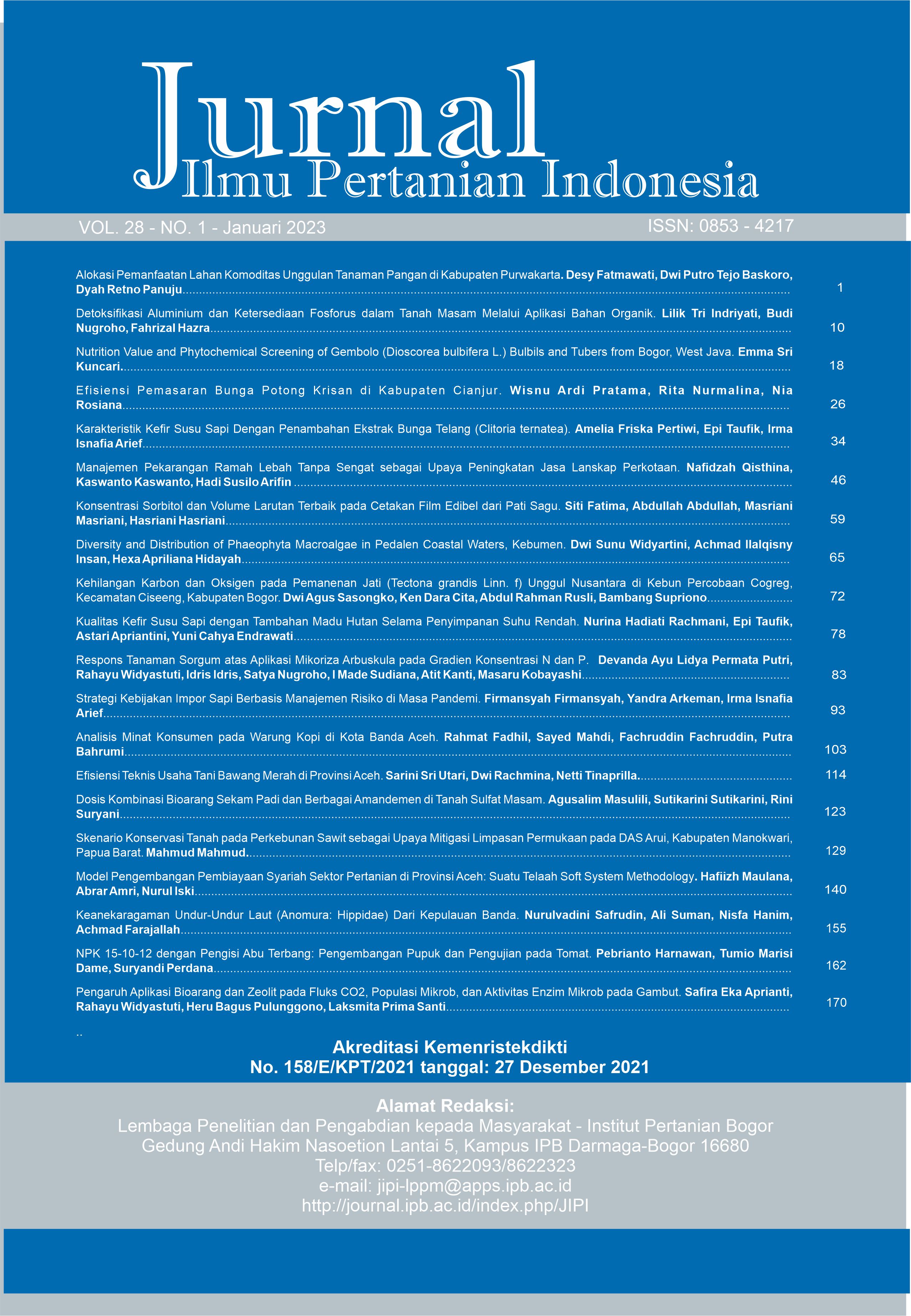NPK 15-10-12 dengan Pengisi Abu Terbang: Pengembangan Pupuk dan Pengujian pada Tomat
Abstract
PT Pupuk Sriwidjaja Palembang (PSP) produces 1,222 tons fly ash per month from the operation of a coal boiler with a capacity of 1x23 MW. Fly ash has potential physical properties and mineral content. The Government Regulation No.22 of 2021, which classifies fly ash as a non-B3 waste, open up opportunities to utilize fly ash in a fertilizer product. In this project, the development of NPK 15-10-12 fertilizer with fly ash as a filler and fertilizer testing on tomato plants has been conducted. The use of fly ash as a filler in the granulation process has no effect on crushing strength and nutrient content of N, P, and K. The effects of using fly ash in the granulation process are in the consumption of water and in the granule drying process. The greater the ratio of fly ash the more water needed in the granulation process and eventually causes an increase in the moisture content in the final product. From the results of fertilizer test on tomato plants on the parameters of plant height, plant diameter, and fruit weight, the use of NPK with fly ash-filler did not give a significant difference compared to the use of NPK without fly ash. The use of fly ash as a filler also does not give any influence on the content of heavy metals in the fruit of tomato. Increase in pH of soil are observed in fertilization to NPK 15-10-12 using fly ash fillers.
Keywords: fly ash, granulation, NPK Fertilizer, tomatoes
Downloads
References
Ahmaruzzaman M. 2010. A review on the utilization of fly ash. Progress in Energy and Combustion Science, 36(3): 327–363. https://doi.org/ 10.1016/j.pecs.2009.11.003
Basu M, Pande M, Bhadoria PBS, Mahapatra SC. 2009. Potential fly-ash utilization in agriculture: A global review. Progress in Natural Science. 19(10): 1173–1186. https://doi.org/10.1016/j.pnsc.2008. 12.006
Bhatt A, Priyadarshini S, Acharath MA, Abri A, Sattler M, Techapaphawit S. 2019. Physical, chemical, and geotechnical properties of coal fly ash: A global review. Case Studies in Construction Materials. 11: e00263. https://doi.org/10.1016/j.cscm.2019. e00263
Doshi SR. 1991. Fusion blend. Fertilizer Research, 30(1): 87–97. https://doi.org/10.1007/BF01048831
Fahrunsyah F, Mulyadi M, Sarjono A, Darma S. 2021. Peningkatan Efisiensi Pemupukan Fosfor Pada Ultisol Dengan Menggunakan Abu Terbang Batubara. Jurnal Tanah dan Sumberdaya Lahan, 8(1): 189–202. https://doi.org/10.21776/ub.jtsl. 2021.008.1.22
Kishor P, Ghosh AK, Kumar D. 2010. Use of fly ash in agriculture: A way to improve soil fertility and its productivity. Asian Journal of Agricultural Research, 4(1): 1–14. https://doi.org/10.3923/ajar.2010.1.14
Mattigod SV, Rai D, Eary LE, Ainsworth CC. 1990. Geochemical factors controlling the mobilization of inorganic constituents from fossil fuel combustion residues: I. Review of the major elements. Journal of Environmental Quality. 19(2): 188–201. https://doi.org/10.2134/jeq1990.00472425001900020004x
Nelvia N. 2018. The use of fly ash in peat soil on the growth and yield of rice. AGRIVITA, Journal of Agricultural Science. 40(3): 527–535. https:// doi.org/10.17503/agrivita.v40i3.793
Rahmawati NUS, Sutopo NR, Nuraini Y, Handayanto E. 2020. Phytotoxicity of coal fly ash on plant growth and heavy metal uptake by plant in an acid soil. Journal of Degraded and Mining Lands Management. 7(3): 2233. https://doi.org/10.15243/ jdmlm.2020.073.2233
Roy WR, Thiery RG, Schuller RM, Suloway JJ. 1981. Coal fly ash: a review of the literature and proposed classification system with emphasis on environmental impacts. Environmental Geology No. 096.
Saidy AR. 2020. Changes in soil chemical properties and growth performance of corn (Zea mays L.) grown in an acidic-tropical soil amended with fly-ash. International Conference On Natural Resources And Sustainable Development (Icnrsd) 2018. [Tesis]. Medan (ID): Sekolah Pascasarjana Universitas Sumatera Utara.
Subiksa IGM, Suastika IW. 2021. The effect of fly ash application to Acacia growth and heavy metals leaching on peatland. IOP Conference Series: Earth and Environmental Science. 648(1): 012161. https://doi.org/10.1088/1755-1315/648/1/012161
Walker GM, Holland CR, Ahmad MN, Fox JN, Kells A. G. 2001. Prediction of fertilizer granulation: Effect of binder viscosity on random coalescence model. Industrial and Engineering Chemistry Research, 40(9): 2128–2133. https://doi.org/10.1021/ ie000647s
Yunusa IAM, Loganathan P, Nissanka SP, Manoharan V, Burchett MD, Skilbeck CG, Eamus D. 2012. Application of coal fly ash in agriculture: A strategic perspective. Critical Reviews in Environmental Science and Technology. 42(6): 559–600. https:// doi.org/10.1080/10643389.2010.520236
This journal is published under the terms of the Creative Commons Attribution-NonCommercial 4.0 International License. Authors who publish with this journal agree to the following terms: Authors retain copyright and grant the journal right of first publication with the work simultaneously licensed under a Creative Commons Attribution-NonCommercial 4.0 International License. Attribution — You must give appropriate credit, provide a link to the license, and indicate if changes were made. You may do so in any reasonable manner, but not in any way that suggests the licensor endorses you or your use. NonCommercial — You may not use the material for commercial purposes.






















